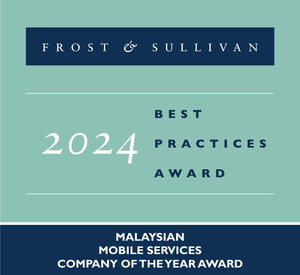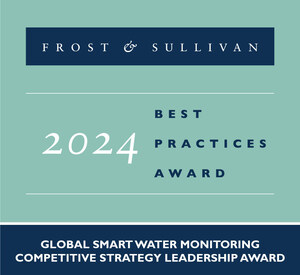Enhanced Need for Agricultural and Environmental Monitoring Revs up Demand for Sensors, Finds Frost & Sullivan
MOUNTAIN VIEW, Calif., Feb. 4 /PRNewswire/ -- The increasing need for monitoring agricultural and environmental parameters to protect all forms of life from exposure to hazardous chemicals has driven the adoption of advanced sensing systems. The exploding population has made it necessary to ramp up agricultural yield, and in this regard, tracking of soil and crop/plant characteristics has become vital. Fertilizer management is important to prevent fertilizer run-offs. To meet the demands of the growing population and energy consumption as well as promote a cleaner and safer environment, sophisticated sensing technologies are investigated and deployed for both agricultural and environmental monitoring applications.
(Logo: http://www.newscom.com/cgi-bin/prnh/20081117/FSLOGO)
New analysis from Frost & Sullivan (http://www.technicalinsights.frost.com), Sensors for Agriculture and Environment Monitoring, finds that advanced techniques such as sensors, wireless communication technologies, and robotics are employed for precision agriculture/farming. Hence, there is always a demand for enhanced sensing systems to improve crop production and pest management, and to reduce environmental impact.
If you are interested in a virtual brochure for this study, please send an e-mail to Sarah Saatzer, Corporate Communications, at [email protected], with your full name, company name, title, telephone number, company e-mail address, company website, city, state and country.
"Legislations and regulations that emphasize environmental safety and government initiatives to facilitate R&D programs are promoting sensor uptake," notes Technical Insights Research Analysts Kasthuri Jagadeesan and Ritika Nahar. "Advances in related industrial sectors such as information and communication, manufacturing, and materials are also fuelling market prospects."
It is desirable to have multi-sensory systems, which would monitor multiple parameters of interest such as soil characteristics and environmental factors. Wireless sensor networks (WSNs) are gaining increased momentum in the agricultural and environmental space.
Although detection techniques are based on optical, acoustic, electromagnetic, electrochemical, chemical methods, and many more, there is no single standard detection platform. This could be a potential hindrance to the deployment of a specific type of a sensing system for the desired application. Some preferred performance metrics of detection/sensing systems are high sensitivity, specificity, selectivity, wide detection range, and low false alarms.
Lack of standardization; improving sensing system parameters such as sensitivity, specificity, and detection range, developing multi-sensory systems, effective sensor fusion algorithms, and simulation tools are some of the challenges with regard to sensors used for monitoring agriculture and environment. Apart from these factors, the global financial meltdown has slowed market momentum, and difficulties may be encountered in commercialization, new product introductions, global expansion, employment strength, and so on.
Going forward, the focus is on green technologies such as energy harvesting, which has proved to be a viable alternative to batteries in WSN applications.
"Solar powered WSNs are used for agricultural and environmental monitoring applications," observes Nahar. "However, other sources of ambient energy including wind, vibrations, and temperature, could be used to power WSNs and such technologies have to be actively explored."
Although some of the applications leverage the benefits of WSNs and energy harvesting, widespread deployment in the target market is anticipated only during the medium and long terms.
"To promote market penetration for sensors, participants in this space must explore partnerships and collaborations," says Jagadeesan. "Funds from stimulus packages must also be leveraged to develop innovative solutions."
Nanotechnology-based sensing solutions are anticipated in the long run. Micro-electro-mechanical-systems (MEMS) based sensors are identified for detecting chemical and biological contaminants in the environment. Though the technology supports miniaturization and device integration, there has been skepticism about adoption.
Sensors for Agriculture and Environment Monitoring, a part of the Technical Insights subscription, reviews the factors that could influence the deployment of various sensing solutions in target markets. It also provides market data for wireless sensors, along with macroeconomic trends (current economic downturn). Further, this research service includes detailed technology analysis and industry trends evaluated following extensive interviews with market participants.
Technical Insights is an international technology analysis business that produces a variety of technical news alerts, newsletters, and research services.
About Frost & Sullivan
Frost & Sullivan, the Growth Partnership Company, enables clients to accelerate growth and achieve best-in-class positions in growth, innovation and leadership. The company's Growth Partnership Service provides the CEO and the CEO's Growth Team with disciplined research and best-practice models to drive the generation, evaluation, and implementation of powerful growth strategies. Frost & Sullivan leverages over 45 years of experience in partnering with Global 1000 companies, emerging businesses and the investment community from 40 offices on six continents. To join our Growth Partnership, please visit http://www.frost.com.
Sensors for Agriculture and Environment Monitoring
D1AE
Contact: |
|
Sarah Saatzer |
|
Corporate Communications – North America |
|
P: 210.477.8427 |
|
SOURCE Frost & Sullivan
WANT YOUR COMPANY'S NEWS FEATURED ON PRNEWSWIRE.COM?
Newsrooms &
Influencers
Digital Media
Outlets
Journalists
Opted In






Share this article